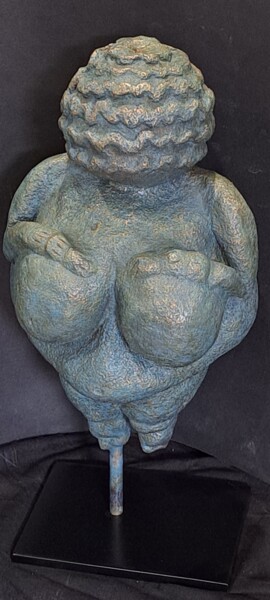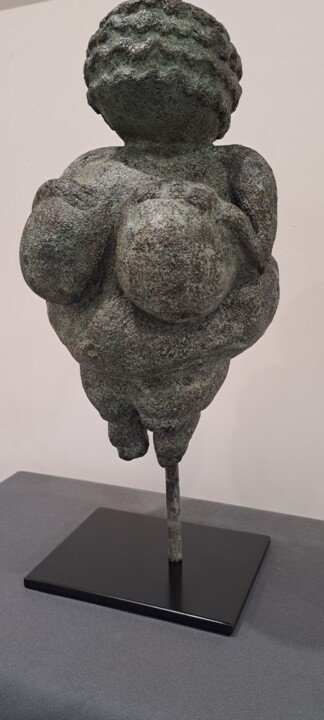
3 原始当代雕塑待售:
青铜技术的起源是什么?
青铜雕塑是一种非常古老的技术,可以追溯到上古时期。要获得青铜雕塑,必须从石膏、泥土或蜡的原始模型开始,然后浇铸,并在其中熔化青铜,使其具有初始形状。然后我们可以区分青铜艺术,这是复制品,与原始青铜,这是一个真实的雕塑。艺术史上大多数最具象征意义的雕塑都是使用这种技术制作的:尤其是罗丹的思想家,布鲁塞尔撒尿小童(由老杰罗姆·杜克斯诺伊制作),爱德华·埃里克森的小美人鱼,安装在哥本哈根, Louve Capitoline,或 Louise Bourgeois 的不同蜘蛛 (Maman)。
如何定义部落艺术风格 ?
土著人民的视觉艺术和物质文化被称为部落艺术,有时也被称为非西方艺术、民族志艺术,或者更具争议性的原始艺术。部落艺术通常具有仪式或精神功能。来自部落文化的物品的设计和工艺,通常起源于农村,被称为部落艺术。
在 19 世纪,著名的西方艺术专业人士甚至不认为非西方艺术是艺术。相反,这些物品被视为“异国情调”或“原始”社会的遗物和例子。但在 20 世纪下半叶,人们对部落艺术的态度发生了转变。在 1960 年代后现代主义出现之前,艺术评论家主要从形式主义的角度看待部落艺术,很少考虑作品的象征意义、历史或文化背景或艺术家的意图。从那时起,部落艺术,如西方收藏的非洲艺术,开始受到国际收藏家、展览和艺术市场的高度重视。
“部落”一词可能意味着一种与原始主义相关的不太复杂的艺术,并暗示缺乏技能、设计、意图或概念。然而,随着博物馆重新审视和重新整理他们的藏品,承认部落艺术远非简单和原始,而且往往具有远远超出我们预期的执行技巧,它正在获得越来越多的公众兴趣。此外,它具有触及我们灵魂的力量。我们的内在本能可能会被唤醒,并且由于它们引人注目的存在和情感能量,我们会与它们的真相联系起来,从而增强我们对精神深度的感知。
从历史上看,西方人类学家、私人收藏家以及民族志和自然历史博物馆都收藏过部落艺术品。在博物馆收藏中,部落艺术可分为三大类:美洲和大洋洲的艺术,尤其是澳大利亚、美拉尼西亚、新西兰和波利尼西亚的艺术;和非洲艺术,特别是来自撒哈拉以南非洲的艺术。
非洲部落艺术
石雕、木雕(面具和雕塑)、珠宝、篮筐、纺织品、管子、乐器、武器、珠饰以及门和墙壁装饰等建筑特色的设计都是非洲部落艺术的例子。这些工艺的发展受到工具、资源和技术诀窍的可及性的影响;并非所有部落都从事这些艺术活动。最典型的材料是木头,经常用粘土、油漆、贝壳、珠子、象牙、金属、羽毛、动物毛发、拉菲草装饰,在极少数情况下甚至用半宝石装饰。
非洲艺术是包罗万象的宗教的基本组成部分。据称存在于所有生物中的生命力由作为其体现或代表的特定图像表示。这些死者的形象保留了部落祖先的精髓,他们经常为他们说话,让人们有机会与祖先的灵魂联系起来。非洲部落手工艺品通常是作为宗教艺术创作的——用于特定的仪式或礼仪用途——尽管事实上许多使用的形式都包含世俗成分,而且一些艺术品纯粹是装饰性和装饰性的。
许多部落仪式的基础是加入年龄组,例如年轻人或老年人的“社团”,每个社团都有自己独特的象征和崇拜主题。这样的“社会”以其丰富的雕刻小雕像和面具而闻名,其中许多代表雷神或火神等守护神。尽管雕刻品几乎完全被某些社会作为奢侈品制造,但它们与面具一样普遍和流行,并且具有仪式意义。尼日利亚的约鲁巴部落是技艺精湛的圆形人物雕刻师,他们经常在他们典型的大面具上镶嵌成群活泼的娃娃,营造出派对正在进行的错觉。由于非洲雕塑在其他部落(尤其是约鲁巴人)中的卓越品质和声誉,雕塑家可以达到有点类似于西方知名艺术家的地位和声名。
大洋部落艺术
大洋洲次区域由四个不同的民族地理区域组成:波利尼西亚、密克罗尼西亚、美拉尼西亚和澳大拉西亚。大洋洲部落艺术指的是生活在这四个地区的土著人民的文化传统和创作历史。这种拉皮塔文化最终对波利尼西亚、密克罗尼西亚和美拉尼西亚的大部分地区产生了影响。另一个因素是越南东山文明,它在公元 600 年左右兴盛起来,是西太平洋地区的重要贸易商。整个大洋洲都发现了来自这个文明的青铜器。
尽管每个地区和岛屿群都有其独特的审美传统来塑造其艺术和手工艺,但海洋部落艺术与涉及超自然、精神崇拜和生育的异教事件有关。产生了各种各样的艺术形式,包括人体彩绘、纹身、绘画、雕塑、木雕和纺织艺术,艺术家和工匠使用的大部分材料都是易腐烂的。结果,只有少数例子 - 不包括石头建筑和雕塑 - 一直存在。
拉帕努伊岛/复活节岛和马克萨斯群岛上的巨大石雕 (moai) 体现了波利尼西亚许多东部和偏远地区常见的具有突出舌头和凸出眼睛的拟人形象设计的使用,是波利尼西亚艺术的著名例子幸存下来的。其他例子包括波利尼西亚西部的装饰精美的树皮布。
由于它们在整个美拉尼西亚复杂的异教仪式和邪教习俗中被使用,因此面具是土著艺术中的一个关键主题。除了人体彩绘和纹身之外,密克罗尼西亚部落遗物还包括雕刻木碗、彩绘船和程式化的木制面具。人体彩绘、岩画、树皮画、岩版画、立石、雕刻、雕塑以及工具和武器上的装饰只是澳大利亚土著艺术中使用的众多风格和媒体中的几个例子。
美国部落艺术
美国印第安艺术深受前者游牧、猎人式的生活方式和后者略微静止但仍然贫困的环境的影响。区域独特的创意传统出现的另一个重要方面是资源的可获得性,包括木材、柳条、金属、动物骨骼、粘土和棉花。
西南部落是编织、制作陶瓷和创作壁画的专家。这些部落包括祖尼人、纳瓦霍人和霍皮人,以及亚利桑那州南部的霍霍坎人、亚利桑那州北部和新墨西哥州的安萨兹人、新墨西哥州西南部的明布雷斯人和安萨兹人。来自西南部的美洲原住民发明了沙画,通常被称为干画(尤其是纳瓦霍人)。
在中西部,部落全权负责塑造文化。这些部落以其错综复杂的纺织艺术以及著名的土方工程或“雕像土墩”而闻名,这些土方工程被建造成类似于不同的动物。部落艺术还包括雕刻的石管,其图案从极其逼真到抽象,此外还有雕刻的木碗和抛光的石头和铜饰物。
东南地区还生产形似鸟兽的烟斗、精雕细琢的贝壳和精美彩绘的衣饰。尽管使用的是劣质粘土,但它以生产精美的陶器而闻名。陶器被制作并装饰成各种花卉和几何图案,用于礼仪、宗教和私人用途。
美洲原住民篮筐是西海岸的一种著名艺术,尤其是在加利福尼亚。尤其是东北印第安人的易洛魁人部落,以其编织的贝壳腰带、豪猪刺绣和假脸协会面具而闻名。西北地区最好的部落艺术是雕塑,尤其是木雕。图腾、小木雕和精心绘制并经常镶嵌石头和鲍鱼壳的面具是最受欢迎的手工雕刻风格。
部落艺术如何影响现代艺术
到 19 世纪中叶,随着越来越多的探险队带回部落文物,人们对当时被称为原始主义/原始艺术(通常是黑非洲的艺术)的兴趣开始增长。 19 世纪末和 20 世纪初的重要部落艺术展览也向西方艺术界展示了非西方艺术。现代艺术博物馆举办了重要的展览,例如 1941 年的美国印第安艺术和 1935 年的非洲黑人艺术。
艺术家们在部落神像和仪式面具中发现了一种替代西方艺术的模式,其非自然主义、高度程式化的形式也包含了强大的、高度情绪化的意象。部落艺术对文森特梵高和亨利马蒂斯,保罗高更和巴勃罗毕加索等着名艺术家产生了重大影响。最显着的早期影响是立体主义,它通过分割画面和放弃透视图,通过主要利用部落艺术的形式含义,迅速削弱了西方范式。抽象艺术是其中的主要成果之一。
大约在同一时期,德国团体 Die Brücke 开始更多地关注非西方艺术的原始、本能和仪式元素,建立了被称为表现主义的主要现代艺术运动。达达主义者从苏黎世、纽约和巴黎的部落艺术、立体主义和表现主义中汲取灵感,进一步打破了西方范式。达达的绘画或雕塑作品主要由拼贴画和组合组成,它是三维的。艺术可以从任何东西中创造出来,而不必通过绘画、雕刻或建模这一事实是由这件由现成材料组成的作品所证实的。它的图像经常包含部落艺术的各个方面,并且在政治、社会或美学层面上具有对抗性。达达提出了最终导致概念艺术的概念,其影响与其他现代艺术流派的影响相结合,创造了当今世界所享有的广阔、广泛、极其丰富、多样和全球多样化的当代艺术之河。
裸体 ”为主题的艺术品
正如从古代流传下来的雕像所证明的那样,最简单的人体一直是雕塑家取之不尽的灵感来源。除了中世纪的宗教影响在裸体上蒙上朴素的面纱,然后被认为是可耻的和“罪”的代名词,裸体一直是一种旨在突出和颂扬美的雕塑。以学术或更色情的方式描绘人体。雕塑中的裸体,无论是男性还是女性,首先是静止姿势或运动中剪影的正确表现,四肢对称性的工作,比例的准确性,通过或多或少具有暗示性的姿势。在迄今为止著名的裸体雕塑中,我们可以提到例如米开朗基罗的《大卫》、奥古斯特·罗丹的《思想者》或著名的米洛维纳斯。
如何在网上购买青铜雕塑?
如果您是艺术爱好者或有兴趣购买您的第一件雕塑,何不在线购买呢?
浏览互联网和寻找有价值的青铜雕塑出售有很多好处。
在您决定购买一尊或几尊雕像之前,您需要确切地知道您的选择是什么以及您的钱能得到什么。
青铜是一种非常昂贵且高质量的雕像材料,因为它非常耐用,并且可以使用数十年。它们绝对是现代古董,可以定制您的室内装饰。大理石或木质顶柜上的马青铜或裸青铜是永恒的装饰之星,将为您的家带来生机。
在您从任何网上商店购买青铜雕塑之前,您应该首先仔细阅读每件物品的说明。每个产品说明都会告诉您您需要了解的有关产品的所有信息。例如,应该提及雕像的重量和尺寸的描述。阅读有关卖家及其传记的文章也是一个好主意。一个有信誉的卖家通常在艺术界很有名,而且他会多年来建立自己的声誉。
在从任何艺术网站购买雕塑之前,您需要确保它是由优质材料制成的。青铜雕塑相当昂贵,因为它们的制作并不便宜。您应该能够根据价格立即确定这一点。检查您从任何在线商店购买的每件商品的尺寸,以避免任何退货。
在将青铜雕塑放入购物车之前,请务必查看运输政策。不同的网站会有不同的运输政策。您应在下订单前仔细阅读所有内容,以确保交易顺利进行。我们建议使用安全且安全的付款方式,例如通过手机验证。
青铜雕塑无疑是为您的家增添个性和个性的好方法。他们终于可以负担得起他们制作的艺术品的规模了!如果您正在寻找有趣的、有创意的青铜雕塑(价格仍然非常实惠),我们建议您浏览我们的网站artmajeur.com。
如何在线购买裸体雕塑?
世界各地的艺术家从一开始就从女性或男性的身体中汲取灵感。在艺术史上,具象、超现实主义或抽象的裸体和肖像一直存在。
有很多方法可以通过使用裸体艺术品或描绘裸体的雕塑来表达您的宗教信仰。
裸体雕塑可能是单调和传统的,但根据艺术家的审美,它们也可以是超现代的。在当今的艺术世界中,雕塑家擅长创作涵盖整个身体的艺术作品。看到裸体雕像,你会爱上它们。
在线购买裸体雕塑时,主题和设计一样是最重要的考虑因素之一。收藏家购买雕塑是因为他们被艺术品的美丽所感动。由于时事、文化、历史或宗教,一些艺术爱好者更喜欢在众多雕塑中购买裸体雕像。
ArtMajeur 有大量可供出售的裸体雕塑。
在线艺术画廊是在几分钟内购买裸体雕塑的好地方。在做一些研究之后,您可以像购买任何其他商品一样在互联网上购买任何裸体雕塑。
通过互联网购买雕塑有几个好处,包括您不必去画廊就可以节省时间和金钱。从艺术网站,您可以订购艺术品并将它们送到您的家中或办公室。抽象或具象的裸体雕塑会让您的客厅看起来令人惊叹,您会很高兴将它添加到您家的装饰中。
您可以通过在线购买裸体雕塑来省钱。
要缩小您在我们网站 artmajeur.com 上的选择范围,请从与您的其他室内设计相得益彰的各种尺寸和颜色开始。
事实上,您可以按大小从小到大对裸体雕像进行分类。
如果您比较交货和价格,在线购买雕塑可能会很容易。谈到艺术,收藏家是最好的知识来源。如果您知道艺术品的标题和艺术家,您可以使用此功能快速选择最好的替代品。运费包含在所列价格中。在购买之前检查运输方式是必不可少的。此处还介绍了 ArtMajeur 艺术品销售的条款和条件。在这里,没有什么新东西要学。如果您不满意,您也可以随时归还原始雕塑。
从时间和金钱两方面来说,在线购买裸体雕塑是最好的选择。
Discover contemporary artworks on ArtMajeur
Contemporary art is a vibrant constellation of artistic expressions. This creative universe encompasses a wide array of mediums, from paintings, sculpture, and photography to drawing, printmaking, textile art, and digital art, each medium a star shining with its own distinct radiance. Artists use diverse supports and materials to bring their visions to life, such as canvas, wood, metal, and even innovative digital canvases for the creation of virtual masterpieces.
A contemporary painting, for instance, may weave its story through the masterful strokes of acrylic or oil, while a contemporary sculpture might sing its song in the language of stone, bronze, or found objects. The photographic arts capture and manipulate light to produce striking images, while printmaking employs techniques like lithography and screen-printing to produce multiples of a single, impactful image. Textile art plays with fabrics and fibers, whereas digital art pushes the boundaries of creation with innovative technology.
The allure of contemporary art lies in its boundary-pushing nature, its relentless quest for experimentation and its constant reflection of the evolving human experience. This boundless creativity, coupled with its strong social and personal commentary, makes every piece of contemporary art a unique emblem of its time, a mirror held up to the realities and dreams of our complex world. It whispers to us, moves us, provokes thought, and kindles a deep emotional response, stirring the soul of anyone willing to listen. It is, indeed, the language of emotions and ideas, spoken in the dialect of our era.

©2022 Olivier Bordaçarre
Origins and history of contemporary art
The story of contemporary art unfolds in the mid-20th century, marked by seismic shifts in artistic expression. Post-World War II, around the 1950s and 1960s, artists began experimenting beyond traditional confines, challenging the norms of what art could be. This revolutionary epoch birthed myriad new movements and artistic forms such as abstract expressionism, pop art, and minimalism. Paintings, once confined by realism, embraced abstraction, as artists used color and form to express emotions and ideas. Notable periods like the advent of pop art in the late 1950s and early 1960s saw artworks mimicking popular culture and mass media, reflecting society’s shifting focus.
The sculptural arts, too, witnessed a metamorphosis. Sculptors started to experiment with new materials and forms, often creating artworks that interacted with the viewer and the surrounding space, fostering a sense of engagement. Drawing, a timeless practice, also evolved, with artists incorporating innovative techniques and concepts to redefine its role in contemporary art.
Photography, a relatively new medium, emerged as a powerful tool in the contemporary art landscape. Born in the 19th century, it truly came into its own in the latter half of the 20th century, blurring the lines between fine art and documentation. Printmaking, a practice dating back to ancient times, saw renewed interest and experimentation with techniques like lithography, etching, and screen printing gaining prominence.
The realm of textile art expanded dramatically, as artists began to appreciate the versatility and tactile quality of fabric and fibers. Artists began using textiles to challenge the boundaries between fine art, craft, and design.
The dawn of digital technology in the late 20th century heralded a new age for contemporary art. Digital art emerged as artists started leveraging new technologies to create immersive, interactive experiences, often blurring the line between the virtual and the physical world.
Through these transformative periods, the essence of contemporary art has remained the same: a dynamic, evolving reflection of the times we live in, continually pushing boundaries and embracing the new, always questioning, always exploring.

©2023 Olivier Bordaçarre
Evolutions of theses contemporary works in the art market
As we navigate through the 21st century, the dynamic landscape of contemporary art continues to evolve and expand, reflecting our ever-changing world. Contemporary paintings, once primarily confined to two-dimensional canvases, now embrace a multitude of forms and techniques, ranging from mixed media installations to digital creations, each piece a rich a weaving of thoughts, emotions, and narratives. Sculpture, too, has ventured far beyond traditional stone and bronze, with artists incorporating light, sound, and even motion, embodying the ephemerality and flux of the modern world.
Photography, in the hands of contemporary artists, has expanded its horizons, seamlessly blending with digital technology to create breathtaking imagery that challenges our perception of reality. Drawing, as well, has transcended the borders of paper, incorporating multimedia elements and exploratory techniques to redefine its role in the artistic discourse. Printmaking continues to flourish, with contemporary artists using traditional methods in innovative ways to deliver potent social and personal commentaries.
Textile art, once considered a craft, now holds a prominent place in the contemporary art world, with artists using it to explore issues of identity, tradition, and cultural heritage. Meanwhile, digital art, the newest member of the contemporary art family, has revolutionized the way we create and interact with art, presenting immersive experiences that blur the boundary between the virtual and the physical.
These diverse forms of contemporary art hold significant value in the current art market, not only due to their aesthetic appeal but also their ability to encapsulate and communicate complex ideas and emotions. Collectors, curators, and art lovers worldwide seek these works, drawn to their inherent dynamism, their innovative use of materials, and their eloquent expressions of our shared human experience. As a testimonial to our times, these contemporary artworks encapsulate the pulse of our society and the resonance of individual voices, forever etching our collective narrative into the annals of art history.

©2021 Elisabeth Faucheur
Famous Contemporary Artists
As we delve into the vibrant realm of contemporary art, we encounter an array of artists who shape this dynamic field. Each a master in their medium - painting, sculpture, photography, drawing, printmaking, textile, or digital art - they push artistic boundaries, reflecting our era and challenging perceptions. Let’s explore these remarkable contributors and their groundbreaking works.
1. Gerhard Richter - Known for his multi-faceted approach to painting, Richter challenges the boundaries of the medium, masterfully oscillating between abstract and photorealistic styles. His works, whether featuring squeegee-pulled pigments or blurred photographic images, engage in a fascinating dialogue with perception.
2. Jeff Koons - A significant figure in contemporary sculpture, Koons crafts monumental pieces that explore themes of consumerism, taste, and popular culture. His iconic balloon animals, constructed in mirror-polished stainless steel, captivate with their playful yet profound commentary.
3. Cindy Sherman - An acclaimed photographer, Sherman uses her lens to explore identity and societal roles, particularly of women. Renowned for her conceptual self-portraits, she assumes myriad characters, pushing the boundaries of photography as a medium of artistic expression.
4. David Hockney - Hockney, with his prolific output spanning six decades, is a pivotal figure in contemporary drawing. His bold use of color and playful exploration of perspective convey an intoxicating sense of joy and an unabashed celebration of life.
5. Kiki Smith - An innovative printmaker, Smith’s work explores the human condition, particularly the female body and its social and cultural connotations. Her etchings and lithographs speak to universal experiences of life, death, and transformation.
6. El Anatsui - A master of textile art, Anatsui creates stunning tapestry-like installations from discarded bottle caps and aluminum scraps. These shimmering, flexible sculptures blend traditional African aesthetic with contemporary art sensibilities, speaking to themes of consumption, waste, and the interconnectedness of our world.
7. Rafael Lozano-Hemmer - A leading figure in digital art, Lozano-Hemmer utilizes technology to create interactive installations that blend architecture and performance art. His work, often participatory in nature, explores themes of surveillance, privacy, and the relationship between people and their environments.
Notable contemporary artworks
The contemporary art landscape is a dynamic patchwork of diverse expressions and groundbreaking ideas, each artwork a unique dialog with its audience. Here are a selection of some renowned contemporary artworks, spanning various media such as painting, sculpture, photography, drawing, printmaking, textile art, and digital art, that have profoundly influenced this vibrant movement.
"Cloud Gate" by Anish Kapoor, 2006 - This monumental stainless steel sculpture, also known as "The Bean," mirrors and distorts the Chicago skyline and onlookers in its seamless, liquid-like surface, creating an interactive experience that blurs the line between the artwork and the viewer.
"Marilyn Diptych" by Andy Warhol, 1962 - An iconic piece of pop art, this silkscreen painting features fifty images of Marilyn Monroe. Half brightly colored, half in black and white, it reflects the dichotomy of celebrity life and its influence on popular culture.
"Rhein II" by Andreas Gursky, 1999 - This photographic artwork, a digitally-altered image of the Rhine River, is celebrated for its minimalist aesthetic. It strips the landscape to its bare essentials, invoking a sense of tranquility and vastness.
"Black Square" by Kazimir Malevich, 1915 - A revolutionary painting in the realm of abstract art, this piece, featuring nothing more than a black square on a white field, challenges traditional notions of representation, symbolizing a new era in artistic expression.
"Puppy" by Jeff Koons, 1992 - This giant sculpture, a West Highland Terrier blanketed in flowering plants, explores themes of innocence, consumer culture, and the interplay between high art and kitsch. It’s a delightful blend of traditional sculpture and garden craft.
"Re-projection: Hoerengracht" by Ed and Nancy Kienholz, 1983-1988 - A room-sized tableau representing Amsterdam’s red-light district, this work combines elements of sculpture, painting, lighting, and found objects. It engages viewers in a stark commentary on commodification and objectification.
"Untitled" (Your body is a battleground) by Barbara Kruger, 1989 - This photomontage, combining black-and-white photography with impactful text, explores issues of feminism, identity, and power. Its potent, confrontational message is a prime example of the power of text in contemporary visual art.
"For the Love of God" by Damien Hirst, 2007 - This sculpture, a platinum cast of a human skull encrusted with 8,601 diamonds, probes themes of mortality, value, and the human fascination with luxury and decadence. It’s a compelling blend of macabre and magnificence.
"Physical impossibility of Death in the Mind of Someone Living" by Damien Hirst, 1991 - This artwork, featuring a tiger shark preserved in formaldehyde, blurs the line between traditional sculpture and biological specimen. It prompts viewers to contemplate mortality and nature’s ferocity.
"One and Three Chairs" by Joseph Kosuth, 1965 - A piece of conceptual art, it presents a physical chair, a photograph of a chair, and a dictionary definition of a chair, thus exploring the relationship between language, picture, and referent in art.
These pieces, in their diversity, exemplify the rich tapestry of contemporary art, each piece a unique commentary on our world and a testament to the limitless potential of creative expression.


Olivier Bordaçarre
雕塑 - 青铜 | 17.7x8.3 in

